Institutional Adoption of Digital Assets
Institutional Adoption of Digital Assets
In this piece, we explore the potential of digital assets as an emerging asset class for institutional investors, comparing the maturation of digital assets to the historical adoption of commodities as a mainstream investment vehicle.
Introduction
Digital assets are increasingly viewed as a nascent asset class with the potential to become a widely accepted component of mainstream investment portfolios. The trending acceptance of alternative investments accelerated at the turn of the century as asset managers began increasing their exposure to commodities, private equity, private credit, real estate, and hedge funds—a shift driven by a search for diversification and risk mitigation.
As previously highlighted, commodities are a prime example of how more standardized products, enhanced infrastructure, regulation, and technology combined with rising demand have led to significant institutional inflows into a niche asset class. Digital assets are now more firmly established given their inflation-hedging characteristics and ability to deliver higher returns despite volatility.1 Looking ahead, the asset class appears to be following a historically documented path in which a series of factors converge to create potentially fertile grounds for adoption.
Asset Management: Origins and the Hunt for Diversification
Before diving into the institutional adoption of digital assets, it is worth taking note of the origins of institutional asset management, its growth drivers, and challenges to better understand what lies ahead.
During the 1920s, fund management in the U.S. was fueled by a rising stock market and was limited to wealthy individuals, a trend that was interrupted by the stock market crash of 1929. It was only after World War II that the industry began rebuilding, eventually regaining momentum by the 1960s.2 Both demographics and legislation played a large role in this, opening investments to the general public.
An aging population, labor unions, and larger, industrial companies guaranteed the multi-decade growth of these investment vehicles.3 The U.S. made pensions tax exempt in 1913 and passed the Employee Retirement Income Security Act in 1974 to protect employees after the failure of Studebaker caused many to lose their pensions.4 Today, asset management includes pension funds, sovereign wealth funds, endowments, foundations, banks, and insurance companies, with pension funds accounting for $35 trillion (USD), or half of the total assets under management.5
Diversification, the principle of investing in assets that are not highly positively correlated, became a mainstream concept via modern portfolio theory in a bid to maximize returns for a given level of risk. This concept led to a 60/40 stocks and bonds allocation and was based on the work of Nobel laureate Harry Markowitz in the 1950s, who declared “diversification is the only free lunch in investing.” After initially facing skepticism, it was not until the 1970s that funds adopted the idea more widely, as they sought to better manage risk in the face of market volatility. Better computing power and data also further enabled adoption.
In the 1980s, Brinson, Hood, and Beebower’s work “Determinants of Portfolio Performance” added to the diversification concept, demonstrating that asset allocation—not security selection or market timing—was the main determinant of the variation in portfolio returns.6 This led multi-asset investing to gain traction, especially as of the 2000s, as increasingly sophisticated investment strategies moved into property, commodities, private equity, private credit, hedge funds, and infrastructure.
Following the 2008 financial crisis, this trend was exacerbated because alternative assets tend to have low correlations to stocks and bonds, offering potentially lower volatility and enhanced risk-return. In 2004, alternative investments represented only 6% of global assets under management—less than $5 trillion. However, as of 2024, they represent 15% of assets under management at $22 trillion, a figure which is likely to continue rising. This total includes private equity (42%), hedge funds (22%), real estate (17%), private debt (7%), commodities (6%) and infrastructure (6%).7
The Rise of Alternative Assets: Commodities as a Case Study
The Importance of Product Standardization
As noted above, commodities are an example of a successful alternative asset class that gained adoption within portfolio allocations as investors sought to diversify into assets uncorrelated to stocks and bonds. Commodities met the criteria as several well-publicized studies demonstrated a negative correlation with equities, which proved an attractive characteristic after the equity market collapse of 2000.8 Prior to the early 2000s, most traditional investment portfolios did not have an allocation to natural resources despite their importance in the world economy.
Despite the existence of agricultural futures and the introduction of swaps in the 1970s, commodities remained the preserve of corporates seeking to hedge their exposure. As we saw with the flourishing of the asset management industry, it took a confluence of developments to alter the landscape. Today, the West Texas Intermediate (WTI) futures contract, a grade of U.S. crude, is the most important commodities contract in the world even though asset allocation to commodities has diminished in recent years.
The launch of the Goldman Sachs Commodity Index (GSCI) in 1991, the first practically investable commodities futures index, allowed exposure to a basket of commodities via a financially settled swap. The index enabled traders to reliably benchmark their performance against it and included exposure to energy, agriculture, industrial, and precious metals weighted by world production. Energy accounted for 55% of the total index composition and remains the most relevant commodity within the index today.9
Another pivotal development was the introduction of single asset commodity exchange-traded products (ETPs), regulated and cost-effective exchange traded products that allowed access via an exchange. With the arrival of ETPs, investors did not have to manage storage, expiration risk on futures exposure, or counterparty credit risk. These product innovations coincided with financial engineering and faster, more transparent electronic trading in the 1990s and 2000s and fostered the use of more complex derivatives structures.
Regulatory Impetus
While commodities have been traded in some capacity for centuries, specific laws regulating their trading were not introduced before the 20th century. Regulation around futures contracts was implemented in the early 1900s, and the Commodity Exchange Act was passed in 1936 to prevent market manipulation. These laws set the groundwork for the financialization wave that followed.
On a more general level, financial market de-regulation in the U.K. and the U.S. allowed the financial service sector to experience tremendous growth. The financial services sector grew in importance within their respective economies. By the early to mid-2000s, most banks were offering commodities trading services. The growth in product offerings created healthy competition and improved market access for institutional investors.
The Commodities Boom
In addition to the push for diversification, better product offerings, technology, and a supportive regulatory framework, the commodities complex was boosted by a favorable macroeconomic backdrop. Robust demand from rapidly industrializing developing countries, particularly China, and low supply growth fueled the rally in these assets. The GSCI peaked in 2011, although it briefly breached that level again in 2022 due to geopolitical developments.
By 2020, China accounted for over half of coal, metals, and iron ore demand. China’s industrialization and commodity demand growth were analogous to the experiences of the U.K. and the U.S. in the 19th century and early 20th century. This was also seen in post-WWII Japan and Europe, just at a more accelerated pace.10
A Digital Asset Comparison
In Fidelity Digital Asset’s 2023 Institutional Investor Digital Asset Study of more than 1,000 investors, over 50% of those surveyed agreed that the asset class is here for the long-term. Additionally, more than one-quarter felt their perception of digital assets changed positively, and 65% shared that they plan to buy or invest in digital assets in the future. As was the case with commodities, digital assets are becoming an interesting alternative for institutional investors for multiple reasons which are further explored below.
Product Offerings and Market Access
Access to digital assets for institutional investors continues to improve. Initially, the Grayscale GBTC product, launched in 2013, was the only trust that provided passive price exposure. Subsequently, the CME launched bitcoin futures and several listed companies such as bitcoin miners became an option for bond and equity investors. Microstrategy—which has been accumulating bitcoin on its balance sheet since 2020—is a highly liquid alternative, where investors also express their views via options strategies.
In October 2021, Bitcoin futures ETPs began trading in the U.S. However, futures are an expensive option for investing versus spot because of the negative roll yield. Hence the relevance of the spot bitcoin ETPs, which began trading in the U.S. in January 2024, quickly becoming the most successful ETP launch to date. Globally, ETPs have existed in Canada and Europe since 2021 in addition to numerous private funds. With that said, the launch of U.S.-based spot ETPs was a watershed moment given the size of the U.S. financial markets and the liquidity that ETPs provide.
Drawing parallels with physical commodities, self-custody of bitcoin proved to be a source of friction for institutions—one example including increased operational and legal risks from loss or theft of private keys. Counterparty risk and a lack of regulated, institutional-grade custodians also surfaced as barriers to entry. Additionally, some of the most liquid products—perpetual futures—are more conducive to retail trading than large institutions. That is changing with the growing popularity of options and OTC trading, which are also significant in the commodities space, although traditional futures dominate.
There are now regulated digital asset platforms with sufficient liquidity, access to leverage, and attractive fees palatable to larger investors. For example, Fidelity Digital Assets was the first service by a major financial institution to launch its own execution capabilities in 2019. This solution allowed customers to access liquidity directly from secure cold storage.
Extrapolating from the development of the commodities markets, in the future, structured products should proliferate as a way for investors to gain exposure, reduce risk, hedge against price fluctuations, or allow for customization based on specific goals.
Regulatory Environment
Thus far, evolving and asymmetric regulation has prevented greater institutional involvement in digital assets. The rise of regulated products and custodians offering secure storage and minimizing counterparty risk address several of the key concerns. However, regulations can vary across jurisdictions, adding complexity. Cautiousness surrounding KYC-AML and capital requirements for banks have kept many institutions at bay. Digital assets are different from commodities in this regard, as they were an entirely new technology that had to gain acceptance as a legitimate investment alternative.
In the U.S., the Commodity Futures Trading Commission considers bitcoin and ether to be commodities. As such, it oversees derivatives based on them. Bitcoin futures started trading on the CME in 2017 and ether futures in 2021. However, except for bitcoin, trading of the underlying assets in certain jurisdictions remains unclear. In the U.S., for example, there continues to be some uncertainty with regards to classification of, and applicable regulations for, the majority of digital assets.
In regards to custody, there is no comprehensive U.S. regulatory framework yet. SAB121, published by the Office of the Chief Accountant of the SEC in March of 2022, gave guidance for SEC reporting entities that hold crypto-assets in custody on behalf of clients to record that risk on-balance sheet, differently from other custodied assets. This guidance would have significant capital requirement implications if SEC reporting firms started to custody digital assets at scale. However, in February 2023, the SEC did propose changes to the Custody Rule—which requires that registered investment advisors (RIAs) safeguard client assets with a qualified custodian—expanding it to include digital assets.
Comparatively, in Europe, there have been major developments to create a unified framework for the EU and to protect consumers. In September 2020, the European Commission released a legislative proposal to cover digital assets—the Markets in Crypto-Assets Regulation (MiCA)—which passed in 2023 and is being implemented in two stages. The stablecoin component is effective as of June 20, 2024, with the remaining regulations going into place by December 30, 2024.
MiCA focuses on rules for exchange tokens, utility tokens, and security tokens. Crypto-asset service providers (CASPs) will need authorization at the national level from a member nation to operate within the EU. Providers will have to meet certain criteria such as capital adequacy, security, and operational resilience. KYC-AML, market conduct, and transparency standards will also be required.
In other major financial centers, progress is being made in a number of jurisdictions, including the U.K., Hong Kong, Singapore, and the U.A.E., although the pace of change and approach can vary significantly. Given these differences, it may take time for global adoption to even out, but as with other alternative asset classes, there are now signs of global regulatory appetite to create supportive legal frameworks that increase adoption.
Improved Infrastructure
Over the years, the liquidity and market depth in digital assets has greatly improved. Following its initial launch, bitcoin experienced high degrees of volatility compared to traditional assets. However, that volatility has subsided as institutional market makers and traders have stepped in. While bitcoin is still more volatile than U.S. equity markets, it is important to note that it has been positively skewed and that bitcoin’s recent volatility may be welcomed by investors.
Regarding custody, a crucial component of risk mitigation for investors, the announcement of Fidelity Digital Assets' custody offering in October 2018 was a significant moment for the institutionalization of the industry. Self-custody is a concept unique to digital assets and a barrier to entry for institutions that did not wish to undertake that operational risk. Since then, there have been improvements in the service offerings of many custodians, although counterparty risk remains an area for improvement.
The arrival of institutions into the space has also brought with it better fund administration, data providers, and research as well as other ancillary services that support the fund management industry.
Inelastic Supply, Growing Demand
In the case of bitcoin, its issuance is limited to 21 million BTC. Approximately every four years, or 210,00 blocks, the subsidy rewards are halved. The fourth halving took place in April 2024, leading issuance to be halved from 900 to 450 BTC per day, or an inflation rate of 0.9%, below that of gold.
With each cycle, the relevance of the supply shock diminishes. However, each halving has been followed by an all-time high in the price of bitcoin 12-18 months after the event. In this cycle, we witnessed an all-time high ahead of the halving, as the spot ETP launch may have pulled pent-up demand forward. Thus, the role of demand gains importance. With bitcoin adoption tracking the adoption curve of internet usage, there is potential upside for wider adoption as it becomes more accessible to investors.
The halving and increased adoption of digital assets have also coincided with a period of massive balance sheet expansion by central banks around the world, and concerns around the debasement of currencies vis-a-vis hard assets. Inflationary pressures brought about by post-Covid dynamics and fiscal stimulus also led to equities and bonds becoming positively correlated once again, leading asset managers to seek out alternative investments for diversification purposes. Bitcoin, for example, is highly correlated to monetary conditions, as demonstrated below.
Conclusion
There are several interesting parallels between the digital asset market of today and the evolution of other alternative asset classes, including commodities. Over many years, there were shifts in regulation, product offerings, and a focus on efficient diversification that helped facilitate institutional access. The macro backdrop provided a supply and demand imbalance to add to the investment case.
Many of the same drivers that motivated asset allocators to go outside of the traditional 60/40 portfolio exist today, especially as correlations between bonds and equities have turned positive for the first time since the 1990s.12 Concurrently, access to investing in digital access and regulation is improving. These are encouraging signs that digital assets could, like commodities, be coming into its own as an asset class.










